When it comes to treating recurrent shoulder dislocations, especially in patients with significant bone loss or failed previous surgeries, the Latarjet procedure stands out as a reliable and often life-changing surgical solution. This technique is designed to restore stability to a shoulder that has become chronically unstable, particularly in cases where traditional soft tissue repairs might not be enough.
In this guide, we’ll break down what the Latarjet procedure is, why it’s performed, its potential benefits and risks, and what patients can expect from recovery and outcomes.
What Is the Latarjet Procedure?
The Latarjet procedure involves the surgical transfer of a small piece of bone (the coracoid process) from the front of the shoulder blade to the rim of the shoulder socket (glenoid). Along with the bone, a piece of tendon remains attached, adding a dynamic stabilizing effect.
How It Works
- Bone Transfer: The coracoid process is cut and repositioned to fill in a bony defect on the glenoid rim.
- Sling Effect: The attached muscle (conjoint tendon) acts like a sling, tightening during shoulder movement and helping keep the ball of the shoulder in place.
- Labral Reinforcement: In some cases, labral repair may be performed in conjunction with the bone transfer.
Why Is the Latarjet Done?
This procedure is commonly used when other stabilization techniques—such as arthroscopic Bankart repair—have failed or are unlikely to succeed.
Indications Include:
- Recurrent shoulder dislocations, especially with bone loss
- Significant glenoid bone deficiency (typically over 15–20%)
- Previous failed shoulder stabilization surgeries
- High-demand athletes or manual laborers at risk of redislocation
Benefits of the Latarjet Procedure
The Latarjet is known for providing robust, long-term stability, particularly in challenging cases.
Key Advantages:
- High success rate: Many studies show over 90% of patients experience no further dislocations.
- Durable stability: Especially useful for contact athletes or individuals with significant bone damage.
- Improved function: Most patients regain good strength and range of motion over time.
- Reduced re-injury risk: The triple stabilizing effect (bone block, sling, and capsular repair) makes redislocation far less likely.
Surgical Details
The Latarjet is typically performed as an open procedure, though some surgeons now offer arthroscopic variations. It involves:
- General anesthesia
- An incision over the front of the shoulder
- Removal and transfer of the coracoid bone
- Fixation with screws to secure the bone graft
The procedure takes 1–2 hours, and patients typically go home the same day or after an overnight stay.
Potential Risks and Complications
While generally safe, like any surgery, the Latarjet does carry some risks.
Possible Complications:
- Infection
- Nerve injury (especially to the axillary or musculocutaneous nerves)
- Graft nonunion (bone doesn’t fuse properly)
- Screw loosening or irritation
- Loss of some external rotation
- Arthritis over time if alignment is off
These risks are rare when performed by an experienced surgeon, but they underscore the importance of skilled surgical care and post-op follow-up.
Recovery and Rehabilitation
Recovery from a Latarjet procedure involves a carefully phased rehabilitation plan:
Typical Timeline:
- Weeks 0–3: Arm in a sling, passive motion begins under supervision.
- Weeks 3–6: Gradual return of active range of motion.
- Weeks 6–12: Introduction of strengthening exercises.
- Months 4–6: Return to sports or demanding activities, with clearance from the surgeon.
Full recovery can take 4 to 6 months, though some patients feel functional improvements much sooner.
Success Rates and Long-Term Outlook
The Latarjet procedure has a long track record of success in treating complex shoulder instability. Success rates are typically in the 90–95% range for properly selected patients. Most people return to their previous activity levels, including contact sports and physically demanding jobs.
Long-term studies also show durability, with many patients maintaining shoulder stability and function 10+ years after surgery.
Frequently Asked Questions
1. Why choose Latarjet over a Bankart repair?
The Latarjet is preferred when there’s significant bone loss or a failed Bankart repair. It offers both structural and dynamic stabilization.
2. Will I lose any shoulder motion?
Some patients report a slight loss of external rotation, but this is often outweighed by the gain in stability.
3. Are the screws used in surgery permanent?
Yes, they typically remain in place unless they cause irritation or complications, which is rare.
4. Can the procedure be done arthroscopically?
Yes, some surgeons offer arthroscopic Latarjet, but it requires specialized training and equipment.
5. Is the Latarjet procedure painful?
Post-operative pain is expected but manageable with medication and guided rehab. Discomfort generally lessens significantly within the first few weeks.
